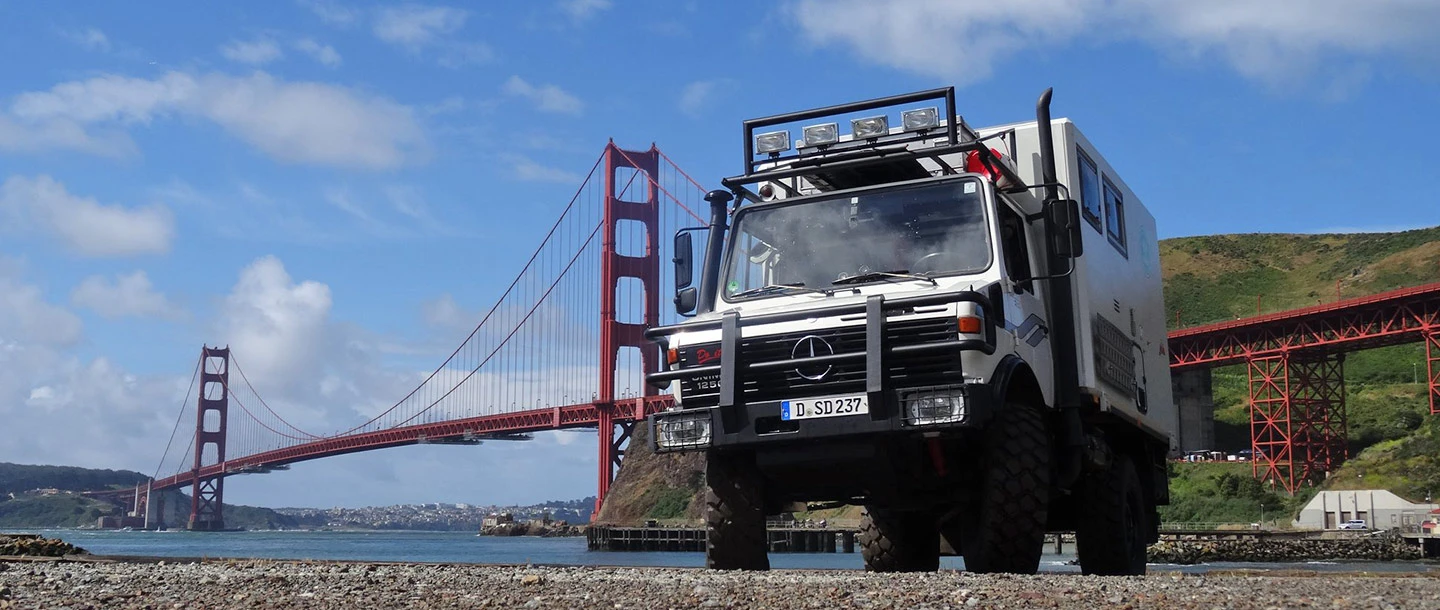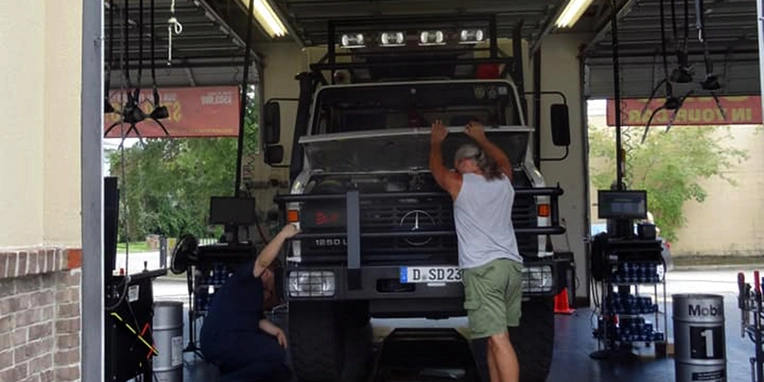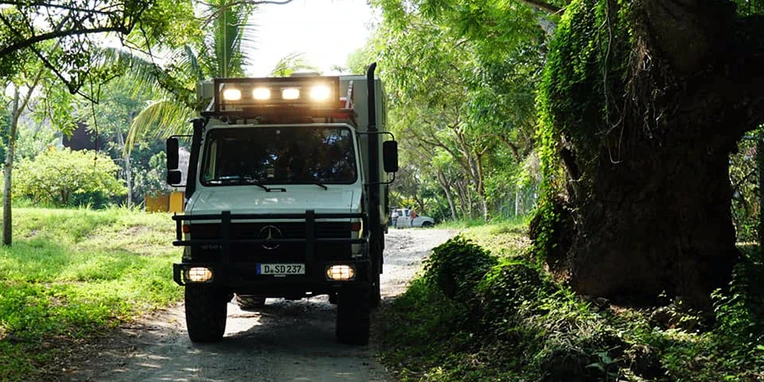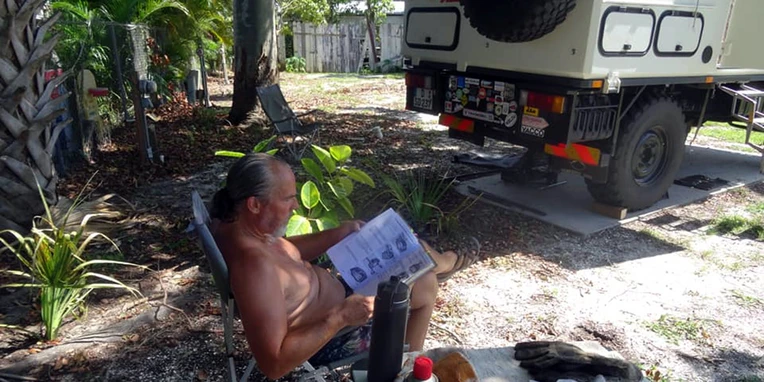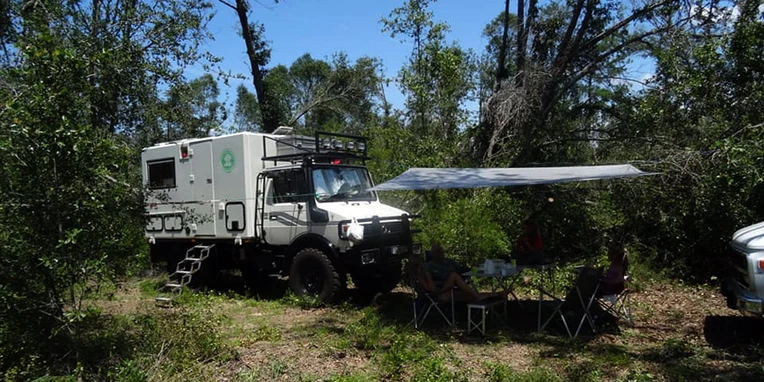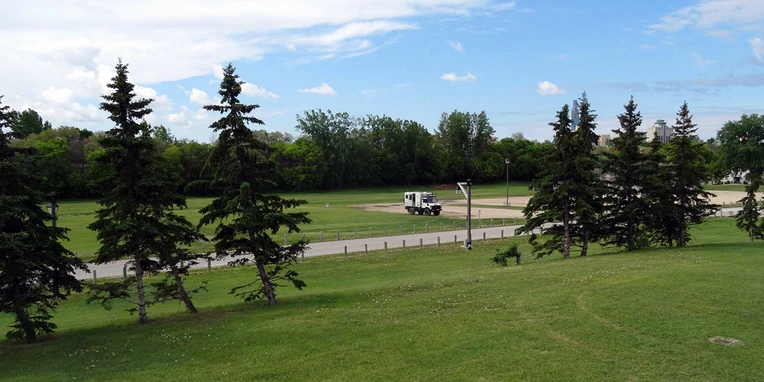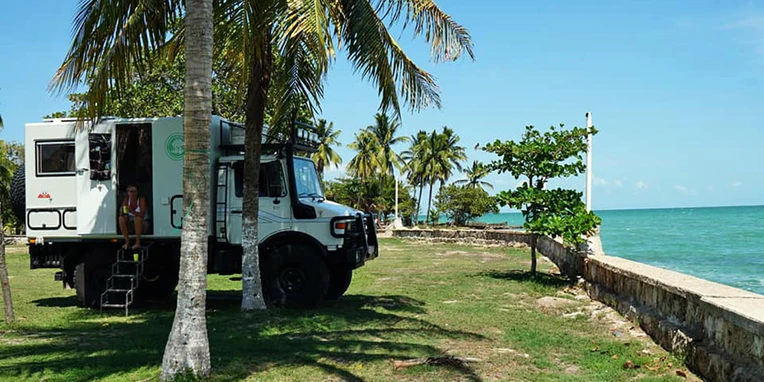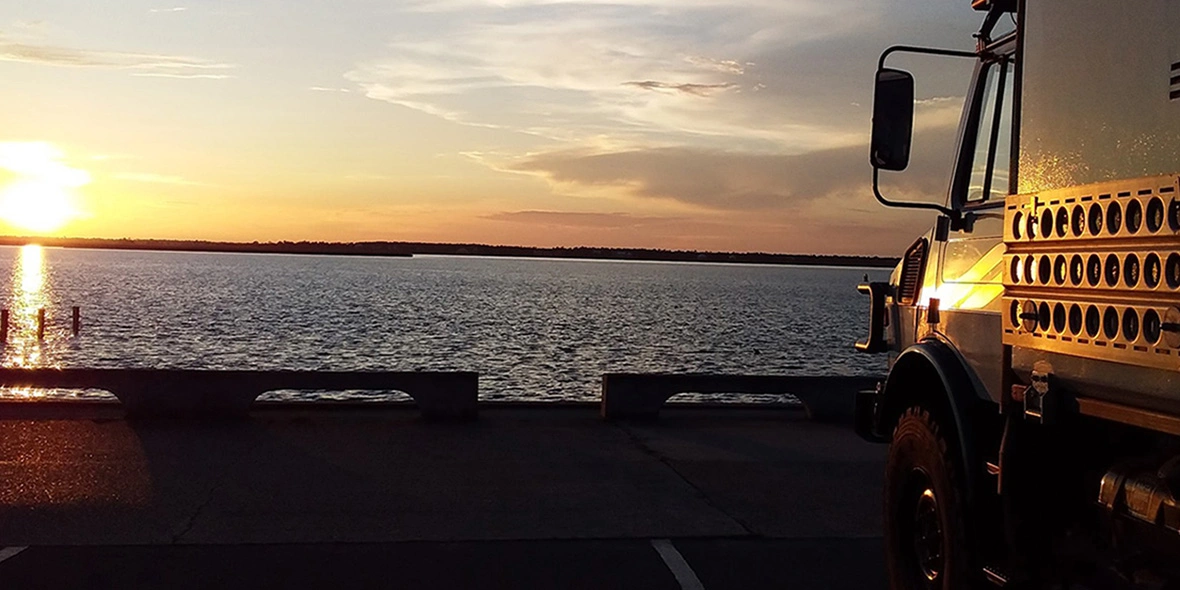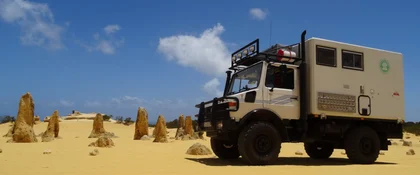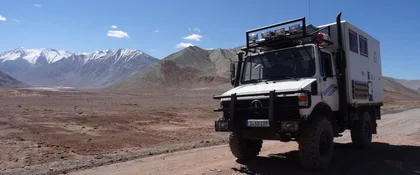On a round-the-world trip with the Unimog expedition vehicle – Part 3.
For many it remains a dream; yet they are living the dream: Sonja, Dirk and their Unimog ELMO are travelling around the globe. In the third part of our series, we’re accompanying the ELMO team on their journey through the USA. They’ve already completed 15 months and 65,000 kilometres since they left Germany. Their passion for travel: endless. Time flies, say Sonja and Dirk – no wonder, when every day is an adventure. And with their Unimog U 427 1450 L, built in 1992, no journey is too far.
On a round-the-world trip with the Unimog expedition vehicle – Part 1
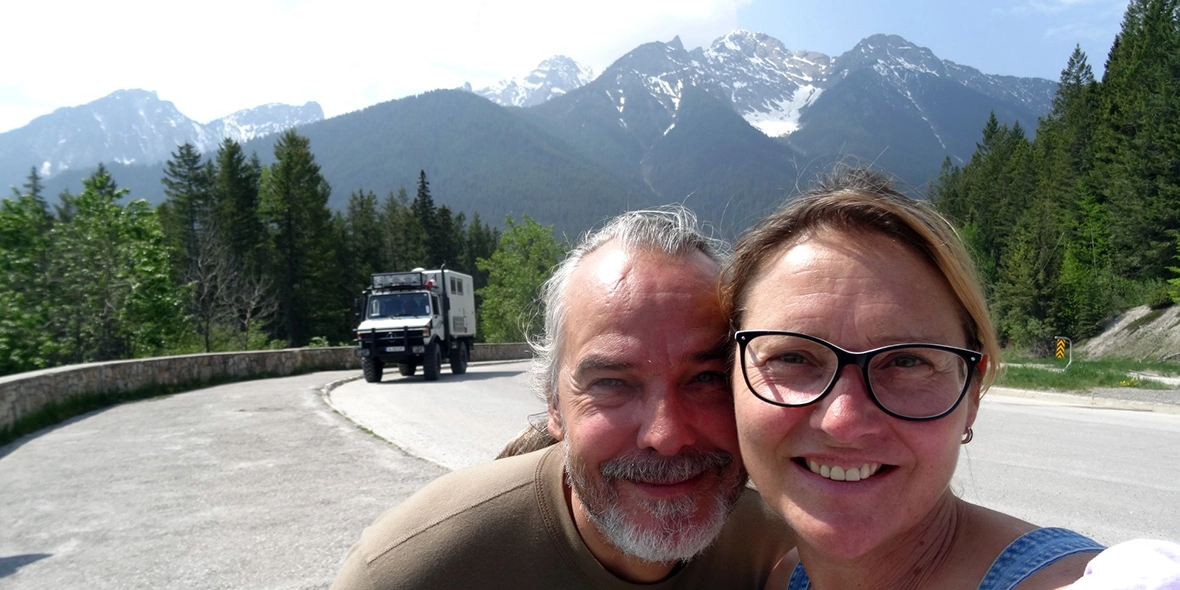
The ELMO team help out with a breakdown in the desert.
The last time we spoke, you were still travelling in Australia. What route did you take from there?
Dirk: We left Perth to return to Melbourne via Adelaide. Which meant crossing the desert again. It’s called the Nullarbor Plain and there is really nothing there except road and every now and then a filling station. And there we met a German couple who had bought a car on the west coast in order to drive to the east coast. They’d broken down right in the middle of the desert. They would have had to pay 3000 dollars to have the car towed 350 kilometres. Luckily we had met the day before at a camping site. So they rang us and we collected them in the desert straight away. Apparently the bracket for the air conditioning system had broken off. It is unbelievable what we have got on-board ELMO! In the middle of the desert we managed to somehow secure the broken-off bracket for the air conditioning system using tensioning straps, screws and anything we had on-board. To be on the safe side, we took the couple as far as Adelaide where the car could be repaired. That was quite exciting. They were overjoyed to have us.
Unimog on a solo journey.
Your next destination was Canada, but that didn't go as planned.
Dirk: Yes, exactly. We actually wanted to go from Melbourne to Vancouver. But there wasn't a ship available, so it was off to Long Beach in Los Angeles in California from Melbourne. And as ELMO was travelling for 40 to 50 days, we went from there to Tasmania and rented a vehicle there.
Sonja: Then we went to New Zealand for 4 weeks, I think, and rented a vehicle there, too. And now I’m in love with New Zealand. Of course we followed the trail of the Hobbits.
Did you miss ELMO?
Dirk: Yes, sure.
Sonja: Always.
Dirk: Of course, above all we miss our bed in ELMO. A hotel can be as good as you like, but it's no match for the bed in ELMO.
Sonja: Exactly, the bed will never be comparable to what you have already.
You then flew on to Los Angeles. And it was time for that long-awaited reunion.
Dirk: Yes! Then we finally got ELMO back. However, that wasn't so easy.
Sonja: This time, he really was at sea for 50 days and afterwards we realised that the penultimate port in the Americas would have actually been very close to Vancouver in comparison to our position. If we’d looked at the schedule a little more closely, we would have shipped him there directly (laughs). After that it took quite a while to get ELMO out of the port. We mere mortals aren't allowed to enter the port facility. You have to have an approval from the Homeland Security in order to get onto the port facility. A truck driver was kind enough to help us drive ELMO out of the port. And then, thank goodness, we had him again. Nothing was broken and none of the locks were defective like the first time. So it really was a very good crossing. Later we saw that ELMO really had been everywhere. He went to Singapore and back to Japan; he was on a bit of a world tour.
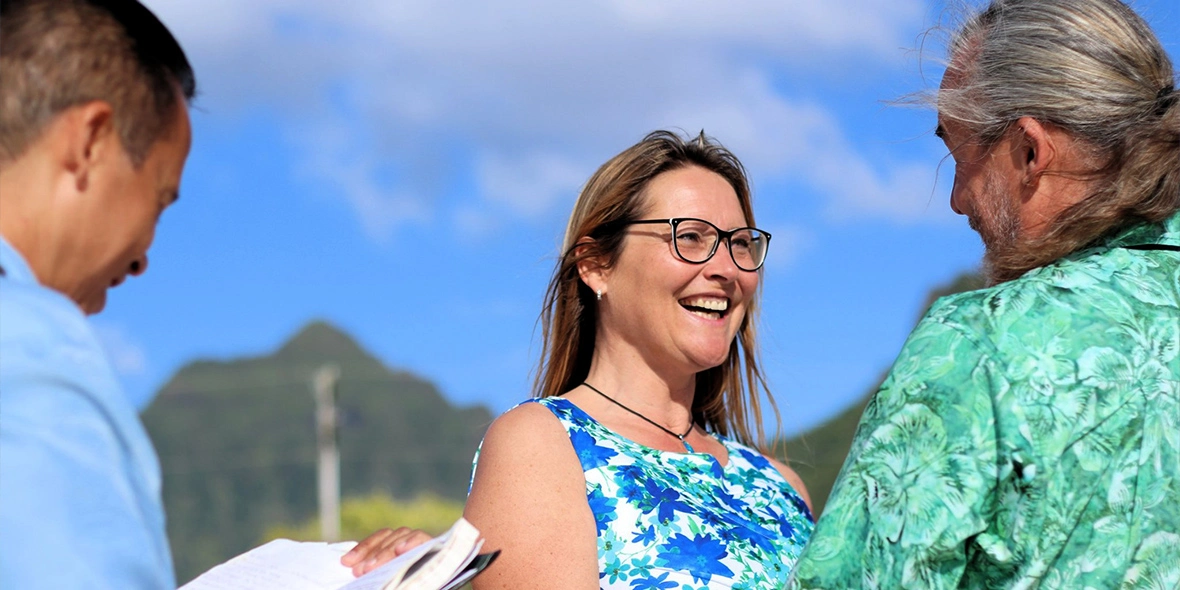
Maintenance work after the crossing: roadworthiness check-up for ELMO.
How did you have to prepare ELMO for the passage? And what has to be checked after a crossing like that?
Sonja: Beforehand, the water tank had to be emptied and all of the attachments had to be placed in the body. So that means the traction plates and anything on the exterior that could be stolen. And also anything that takes up space. The following also applies: don't leave any foodstuffs on board and the gas containers must be empty. However, we have always managed to smuggle a cylinder (laughs). Because we have European gas cylinders and they’re not always easy to fill. We always hide one cylinder and empty the other. We then leave the empty one, where it can be seen.
Dirk: And that has always worked well. And we have to empty the cab because we have to leave our key there and experience has shown that anything that isn't nailed down disappears. On our first journey, we left a small carabiner for the door inside and it was gone in the end. Then you have to put everything back in its place or in the stowage compartments and refill stuff. We couldn't refill the gas cylinder until later in Canada – when we found someone who was prepared to fill our European gas cylinder with our adapter.
